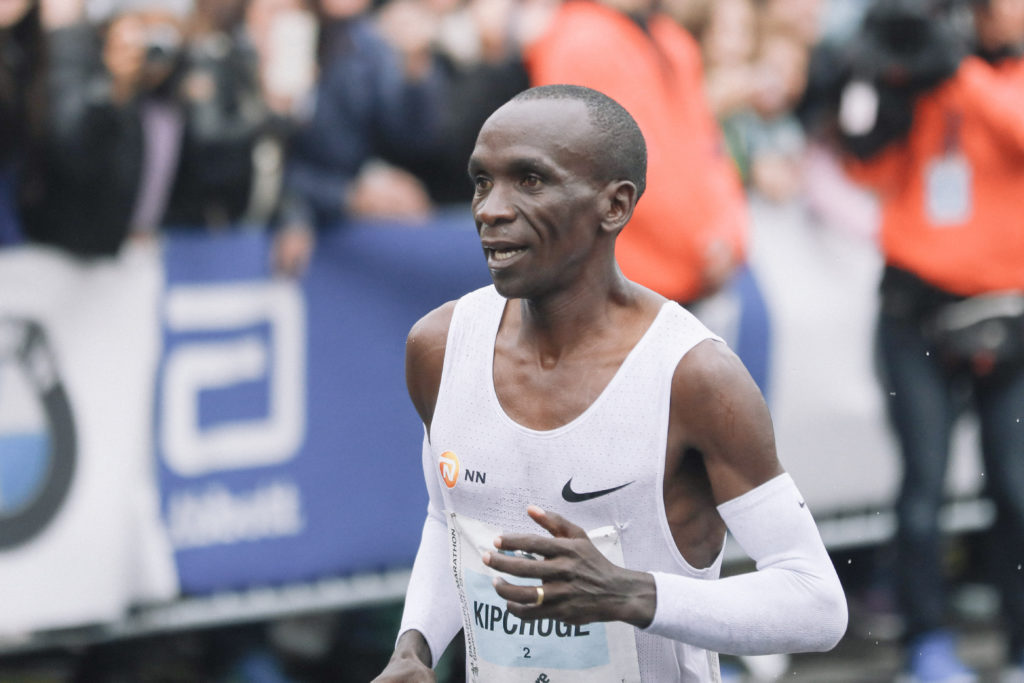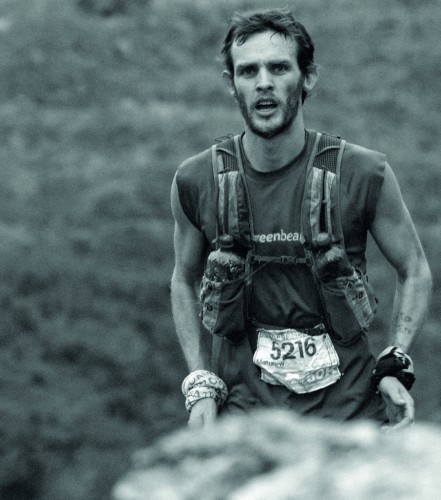
Eliud Kipchoge leaves the rest of the field behind
Eliud Kipchoge crossed the finish of the Berlin Marathon in a time of 2:03:32. During each of the 42 kilometres he ran, his pace varied by as little as eight seconds per kilometre.
Compare that to the stats from the 4,251 runners who used Strava at the Berlin Marathon, whose average pace varied by 24seconds per kilometre.
Keeping a steady pace from start to finish means not going off too fast and avoiding burning out at the end. Some disciplined elite runners sometimes even run a ‘negative split’, meaning their second half of the race is faster than the first.
Top tip: Women at Berlin Marathon were able to keep a steadier pace than men. Next time you are struggling with your splits, see if there is anyone around who can help pace you.
Improve with age
Unlike 100m runners, professional marathoners compete well into the 30s and even 40s.
Eliud Kipchoge is currently 32 and going strong. When Strava users’ times at the Berlin Marathon are compared by age, it was the 25-34 year-olds who proved the fastest.
The 35-44 year-olds performed just as well as the under 24 year-olds last weekend in Berlin.
Top Tip: Next time you are disappointed with a race time, remember to treat your body like a fine wine. It is likely to get better with age.
210K training weeks
Eliud Kipchoge ran 210K during some of his training weeks. That’s five full marathons, or 42 parkruns.
The average male Strava user ran 42.3K per week in the build up to the race. Higher training volume led to faster times for Strava users.
The average male who ran a sub 3-hour time at Berlin, clocked 73.4K of weekly training.
Those who ran a 3-4-hour time at Berlin, trained 44.8K per week and those who ran a 4-5-hour time trained only 30.3K per week.
Top Tip: A healthy volume of training is key to reaching marathon goals. Be sure to increase the distance each week by no more than 10% to avoid injury.

Full-time athlete
Eliud Kipchoge begins training before dawn at the Global Sports Communication camp in Kenya. The track is at an altitude of 2,400m. Here his body builds extra red blood cells which give him a competitive advantage. In the afternoon he often trains again.
Top Tip: Try to maximise your training time. Can you swap your drive through traffic, for a commute on foot? Can you squeeze in a run at lunchtime or use a headtorch to lengthen the day after work?
Faster pace
The average Strava user can run a single kilometre in 3minutes and 46 seconds. Kipchoge’s 2minutes and 48 second pace at Berlin, was not only almost a minute faster – but he kept it going for 42 consecutive kilometres.
To put that in context: if Kipchoge ran that speed for a 5K race, it would feel easy for him as he competed it in 14 minutes flat. Even supposing the average Strava user could keep their fastest km pace going for a full 5K, they would still finish 4 minutes and 50 seconds slower than Kipchoge.
Tip: Speed sessions at your local running club will help improve your average pace. If you train alone, begin by introducing sharp pace changes into your run also known as fartlek.
Find a quiet road and try two minutes hard running, followed by one-minute gentle recovery. Repeat four to six times.
Build up the speed, and reps over multiple sessions. Be sure to include rest days in between.
Photography by Harry George Hall / Strava






